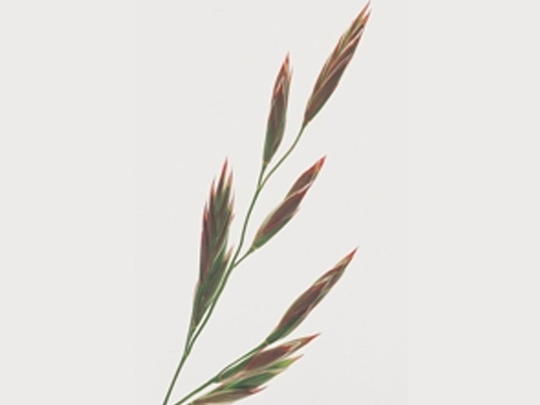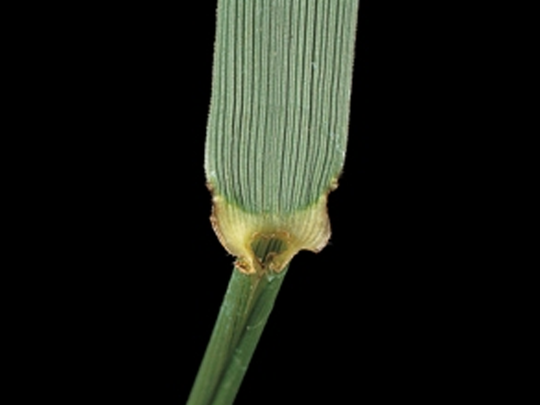Tall fescue is a large, perennial tussock grass which sometimes produces underground shoots (rhizomes). Vigorous leaf growth, no new culm formation after cutting. Deep green tussocks. Culm up to 150 cm tall. Flowers in June. Tall fescue is commonly found in damp fields and wet areas. Very hardy and tolerant of wet and drought. Consequently often found on roadsides and embankments as well. Cultivated varieties have a higher feed value. Although it has the advantage of being a robust, hardy and drought-resistant grass, the tough and often silicified leaves render it unusable. For this reason only cultivated varieties are suitable for grazing and fodder. Feed value 6. New cultivated varieties of tall fescue with improved feed value are often used in the dry climatic zones of the Mediterranean. Tall fescue is used for landscape greening in very dry conditions. This robust species which produces dense tussocks is suitable for seeding racecourses and speedways which are subject to heavy wear, provided it is not cut too close.
| Leaf | Leaf rolled in the bud, leaf sheath leathery and hairless. The leaf blade is up to 12 mm wide, stiff, ribbed and shiny on the underside. The edges are very finely-toothed. Short ligule, pronounced overlapping auricles with a few fine hairs along their margins. |
| Culm | Generally geniculately ascending, 75–150 cm tall. |
| Inflorescence | Double cluster or panicle. This remains spread after flowering. The lower nodes of the main axis each have 2 side branches of different length. The shorter one bears 3 spikelets, the longer one several. The spikelets have 4–8 florets. Glumes are sharply pointed, lemmas normally awnless. |
| Fruit | The grain is 7–8 mm long and larger than that of meadow fescue, the lemma is 5-veined, pointed at the tip and awnless. Pedicel around 2 mm long and rounded at the top. Base of lemma and pedicel often have short hairs. TSW 1.8–2.6 g. |

